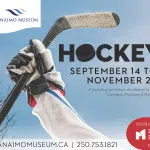
Engineers Create 3D Printed Cheesecake Made Of Edible Ink
Featured in Ripley's Believe It or Not!

A group of mechanical engineers from Columbia University have 3D printed an edible, albeit slightly odd-looking, cheesecake, and it may not be too long before these types of printers become common in home and industrial cooking spaces, according to the university’s School of Engineering. The team behind the desert believes 3D printing multi-layered food may improve food safety, promote customizable meals, and let people choose nutritional content.


